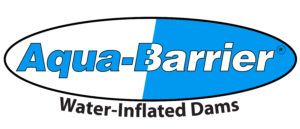Throughout history, humans have demonstrated remarkable ingenuity in bridging landforms, from the Roman arches to modern wonders like the Golden Gate Bridge. However, as infrastructure ages, the need for advanced construction and repair methods becomes increasingly urgent.
Cofferdams have been integral to construction since ancient times. Original cofferdams were crafted from wood, stones, and earth by civilizations like the Persians, Greeks, and Romans to dewater areas during construction. Over the centuries, materials have advanced, leading to today’s sophisticated cofferdams made of steel, concrete, and composite materials like polyvinyl chloride (PVC). Despite these advancements, the core purpose of cofferdams remains constant: to dewater work environments.
Modern Challenges in Bridge Construction and Repair
In contemporary times, bridge construction and repair face new challenges. Urban expansion and stringent environmental regulations have rendered traditional cofferdams less efficient and unsustainable. Consequently, the demand for alternatives that offer reduced intrusion, heightened efficiency, and enhanced environmental sustainability have become crucial.
Achieving Green Milestones
Cutting-edge cofferdam technology is forging a path toward sustainable milestones. Embracing biodiversity considerations, efficient water management strategies, and the promotion of material reusability, modern cofferdam designs and applications are aligning with the overarching sustainability objectives of construction projects. From meticulous pre-construction planning to post-repair environmental recovery efforts, cofferdams play a pivotal role in facilitating a transition to more eco-friendly infrastructure practices. Let’s delve into a comprehensive exploration of how these innovative solutions are reshaping the landscape of bridge construction and repair.


Design and Application of Modern Cofferdams
Building a cofferdam requires carefully planned engineering work. Each stage, from initial design to construction, holds importance in ensuring the success of bridge projects or repair initiatives. And, attention to detail during the design phase is imperative, as it involves comprehensive assessments of site conditions, structural requirements, and environmental considerations. Similarly, the construction phase demands precision and expertise to implement the design accurately while adhering to safety protocols and project timelines. As a linchpin in the bridge construction and repair process, the cofferdam’s creation exemplifies the epitome of engineering practice and project management.
Environmental Impact Assessments
Before proceeding with the installation of a cofferdam, thorough environmental studies are completed. These assessments evaluate potential impacts on local ecosystems and assess the potential disruption to waterways during and after construction or repair activities.
Material Science and Innovations
The choice of materials significantly influences the effectiveness and sustainability of cofferdams. Engineers now have access to a wide array of materials such as steel, soil-cement, and eco-friendly PVC, allowing for customization to meet specific project requirements.
Water Diversion and Management
Efficient management and control of water flow are essential during construction phases. Modern cofferdams integrate state-of-the-art water control technologies and diversion methods, not only facilitating the construction process but also mitigating adverse effects on the surrounding environment..
Successful Applications of Cofferdams
Looking at specific cases where modern cofferdams have been used provides valuable insights into their impact on bridge construction and repair, as well as their broader implications on infrastructure development.
Watch this video to see how Aqua-Barrier® was used for dewatering during critical maintenance on the Prosser Washington Bridge.
Sustainable Development Goals and Cofferdams


Cofferdams serve as pivotal instruments in achieving the United Nations’ Sustainable Development Goals (SDGs) within the realm of bridge infrastructure. By fortifying the resilience and sustainability of bridge construction and maintenance, cofferdams play a crucial role in advancing environmental conservation and societal progress.
Looking ahead to the evolution of bridge engineering, the significance of cofferdams becomes increasingly pronounced. Emerging on the horizon are cofferdam innovations that not only streamline construction and repair processes but also seamlessly integrate with the natural environment, fostering a greener and more sustainable infrastructure landscape. Through continuous innovation and the incorporation of these cutting-edge engineering solutions, we can ensure that bridges—fundamental connectors of our global community—are not only structurally sound but also aligned with the goals of long-term planetary well-being.
For over 27 years, Aqua-Barrier® has stood as the premier provider of temporary flood protection, damming, and dewatering solutions worldwide. The Aqua-Barrier® water-inflated cofferdam, available for both purchase and rental, offers a diverse range of working heights and dimensions, ensuring the highest level of protection for various applications.
This fact is just one of the reasons we’re trusted across the world to ensure worksites stay dry and protected. Want to learn more? Contact us at any time or come see us in person at our world headquarters in Waller, Texas!


